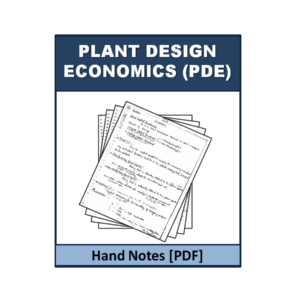Description
Name of Notes : – Chemical process industries Lecture Note
Introduction
Steel is an alloy of iron and carbon, along with small amounts of other alloying elements or residual elements as well. The plain iron carbon alloys contain 0.002 – 2.1% by weight carbon. The carbon presence and its effect on heat treatment changed iron from a laboratory curiosity to an engineering material. Steel is manufactured from iron ore. In the blast furnace, pig iron is produce by reducing iron ore. Due to impurities present in pig iron, it becomes hard and brittle. Alloy content are controlled in order to obtained suitable properties of alloy material. In the newer method of producing steel pure oxygen is blown through the molten metal. Steel may be killed (i.e., made to die quietly in the mold by the addition of de_oxidants such as silicon or aluminum), to prevent the reaction of residual oxygen with dissolved carbon during solidification. Killed steels are used down to -28.90C at least in thinner sections, because of their improved Nil-Ductility Transition Temperature (NDTT) as compared with ordinary steels. Permissible temperatures will vary with thickness and limits of-60C are sometimes invoked for vessels in cold temperature service.
Modules / Lectures
- Overview
- Acid industries
- Fermentation industries
- Industrial sodium compounds
- Halogens and chlorinated compounds
- Electro-thermal industries
- Industrial solvents






Reviews
There are no reviews yet